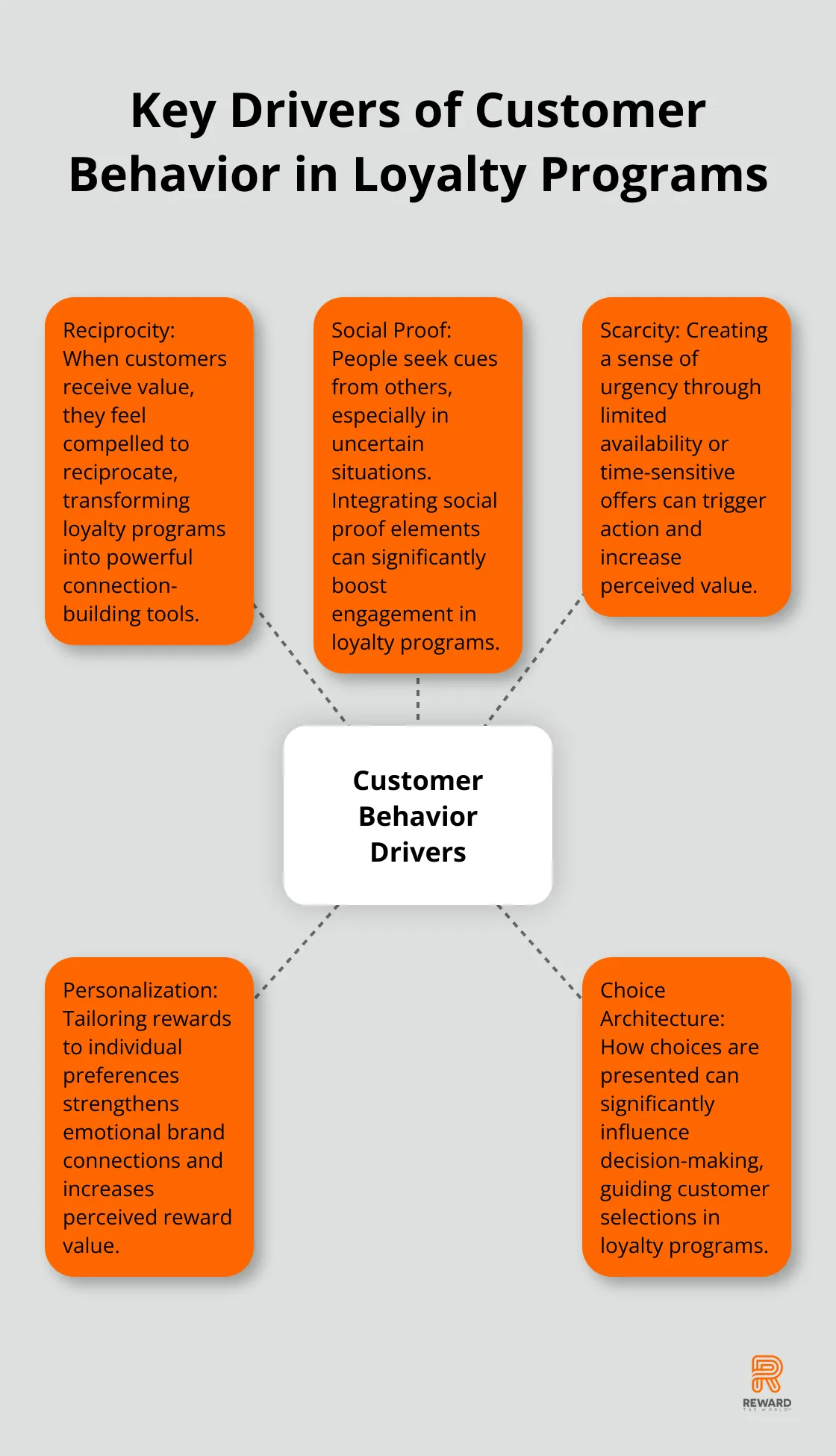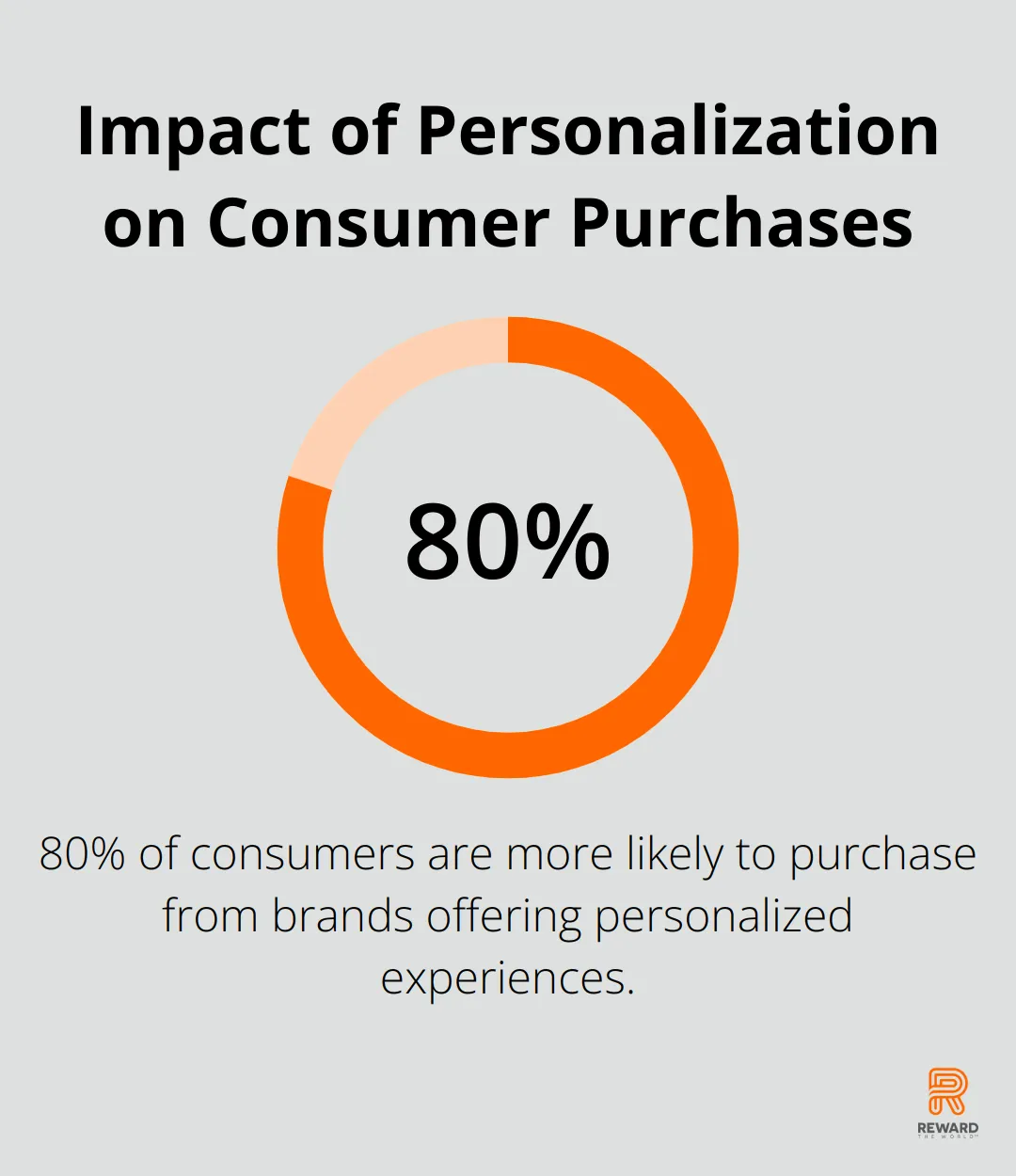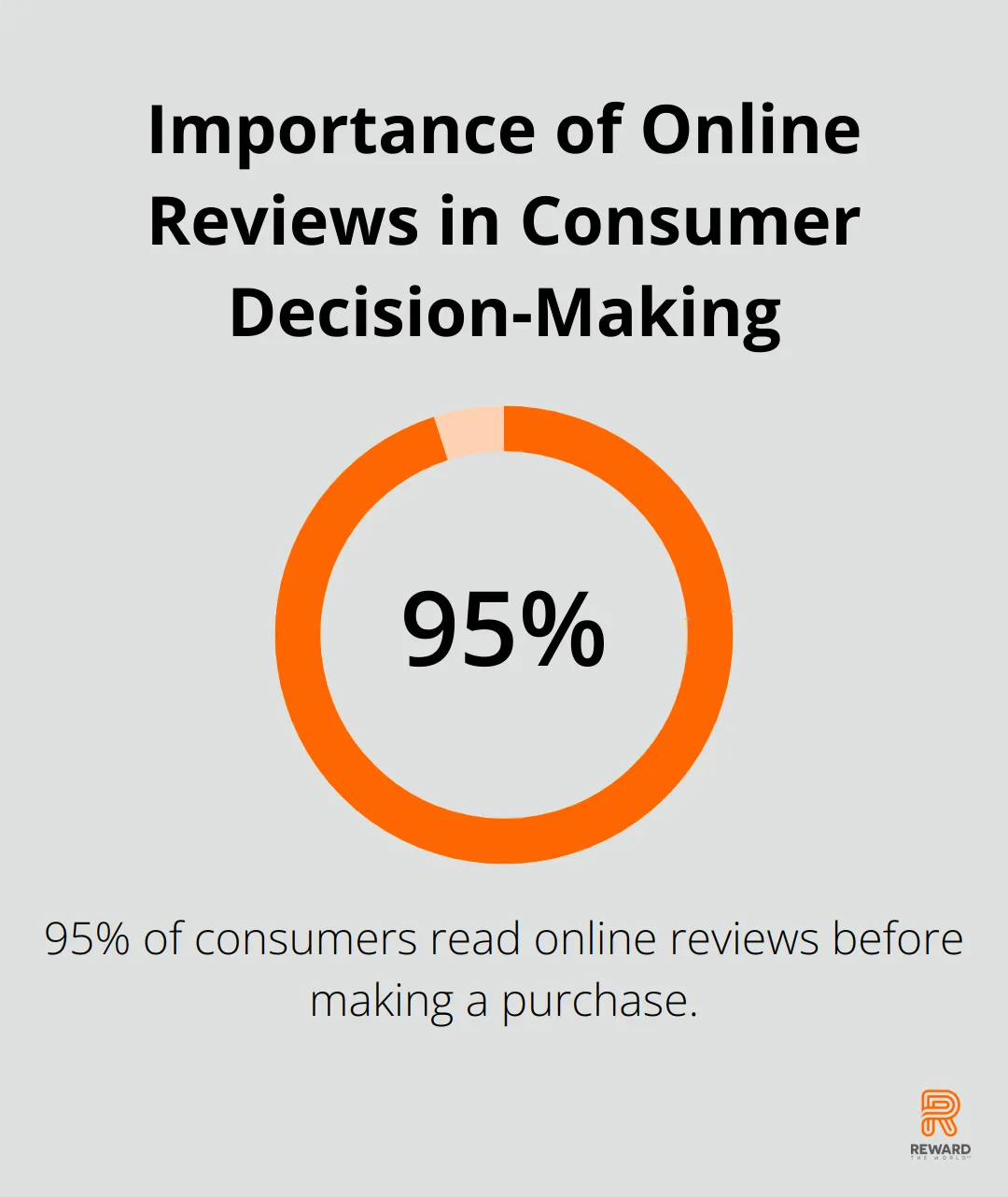
Subtle persuasion is a powerful tool in building customer loyalty. At Reward the World, we’ve seen how small behavioral nudges can significantly impact customer engagement and retention.
This guide explores the art of subtle persuasion in loyalty programs, from understanding the psychology behind it to implementing effective techniques. We’ll show you how to ethically apply these strategies to create stronger, more meaningful connections with your customers.
What Drives Customer Behavior?
The Power of Reciprocity
Reciprocity forms the foundation of strong customer relationships. When customers receive value, they feel compelled to reciprocate. This principle can transform loyalty programs into powerful connection-building tools.
Surprise bonuses or exclusive content for loyalty program members can spark gratitude, increasing future brand engagement.
Social Proof: The Influence of Others
People often seek cues from others, especially in uncertain situations. This social proof phenomenon can shape customer decisions effectively.
Integrating social proof elements into loyalty programs can significantly boost engagement. Displaying redemption numbers for specific rewards or highlighting popular choices can guide customers towards desired actions.
Scarcity: The Allure of Limited Availability
Scarcity triggers action by creating urgency. When something appears rare or time-limited, its perceived value often increases.
Loyalty programs can leverage this principle through limited-time offers, exclusive rewards for top-tier members, or countdown timers for special promotions.
Personalization: Tailoring Rewards to Preferences
Modern loyalty programs thrive on personalization. Analyzing customer data and behavior patterns allows businesses to offer rewards that resonate individually. This targeted approach not only increases perceived reward value but also strengthens the emotional brand connection.
Advanced analytics capabilities enable businesses to create highly personalized reward offerings. Companies that use this technology report improved customer engagement and retention.
The Psychology of Choice Architecture
How choices are presented can significantly influence decision-making. Choice architecture involves designing the environment in which people make decisions.
Loyalty programs can use this concept by strategically organizing reward options. For example, placing preferred choices at the top of a list or using visual cues to highlight certain rewards can subtly guide customer selections.
The art of subtle persuasion in customer loyalty programs involves a deep understanding of human psychology. These principles (reciprocity, social proof, scarcity, personalization, and choice architecture) form the building blocks of effective loyalty strategies. The next section will explore how to implement these concepts in practical, actionable ways within your loyalty program.

How to Subtly Influence Customer Behavior
The Power of Personalization
Personalization stands as a cornerstone for creating loyalty programs that resonate with customers. Research from Epsilon indicates that 80% of consumers are more likely to make a purchase when brands offer personalized experiences. This principle extends to loyalty programs as well.

To harness this power, analyze customer data to understand individual preferences and behaviors. Use this information to tailor rewards and recommendations. For instance, if a customer frequently redeems travel-related rewards, prioritize similar offers in their communications.
Implement a preference center where customers can directly input their interests. This approach not only provides valuable data but also gives customers a sense of control over their experience.
Gamification: The Fun Factor in Loyalty
Gamification elements can significantly boost engagement in loyalty programs.
Incorporate progress bars, levels, or tiers in your loyalty program. These visual cues tap into customers’ desire for achievement and status. You could create a tiered system where customers unlock new benefits as they move up the ranks.
Add challenges or missions that align with your business goals. These could include tasks like making a purchase in a new product category or referring a friend. Reward completion with bonus points or exclusive perks.
The Art of Choice Architecture
The presentation of choices to your customers can subtly influence their decisions. This concept, known as choice architecture, proves powerful in guiding customer behavior without feeling manipulative.
When offering reward options, consider the order of presentation. People tend to choose from the first few options they see. Place the rewards you want to promote at the top of the list.
Use visual cues to highlight certain choices. This could be as simple as using a different color or adding a “Popular Choice” label to guide attention.
Limit the number of options to avoid decision paralysis. While choice is good, too many options can overwhelm customers and lead to inaction.
Transparency and Value
The goal of these techniques is to enhance the customer experience, not to manipulate. Always maintain transparency about how your loyalty program works and ensure that the rewards offered provide genuine value to your customers.
These strategies can help create a loyalty program that subtly guides customer behavior while still providing a positive and rewarding experience. The key lies in continuous testing and refinement of your approach based on customer feedback and program performance metrics.
As we move forward, let’s explore how to implement these subtle persuasion techniques in your loyalty strategy, ensuring they align with your brand values and customer expectations.
How to Implement Subtle Persuasion Effectively
Craft a Compelling Brand Narrative
Your brand story serves as a powerful tool for subtle persuasion. A well-crafted narrative creates an emotional connection with customers, increasing their likelihood to engage with your loyalty program.
If your brand focuses on sustainability, incorporate this theme into your loyalty program communications. You could highlight how each point earned contributes to environmental initiatives. This approach reinforces your brand values and gives customers a sense of purpose in participating.
Use Behavioral Triggers
Behavioral triggers can enhance the effectiveness of your loyalty program significantly. These triggers are specific cues that prompt desired actions from your customers.
One effective trigger is the progress indicator. Show customers how close they are to their next reward to motivate additional purchases. For instance, send an email stating, “You’re just 50 points away from unlocking our premium tier!”
Another powerful trigger is the fear of missing out (FOMO). Limited-time offers or exclusive rewards for loyalty members create a sense of urgency.
Balance Transparency with Persuasion
While subtle persuasion proves highly effective, maintaining transparency and trust is paramount. Customers should always feel they make informed decisions, not that they’re being manipulated.
Be clear about the terms and conditions of your loyalty program. Avoid hidden fees or complicated redemption processes that could frustrate customers. A study found that nearly 95% of consumers read online reviews before making a purchase.

Consider implementing a tiered loyalty program where benefits increase with customer engagement. This structure provides clear incentives for continued participation while allowing customers to choose their level of involvement.
Personalize Your Approach
Personalization is key to effective subtle persuasion. Use data analytics to understand individual customer preferences and tailor your communications accordingly.
For example, if a customer frequently redeems rewards for electronics, send them personalized offers in this category. Personalization can have a direct impact on revenue and customer loyalty.
The goal of subtle persuasion is to guide customers towards mutually beneficial actions (not to manipulate them). Focus on creating value and building trust to develop a loyalty program that benefits both your business and your customers.
Final Thoughts
Subtle persuasion in customer loyalty programs can significantly impact customer engagement and retention. Businesses must apply principles like reciprocity, social proof, and scarcity ethically to create effective loyalty strategies. These techniques, combined with gamification elements and strategic choice architecture, guide customer behavior in mutually beneficial ways.
The ethical application of behavioral nudges remains paramount in loyalty programs. Transparency and genuine value creation should always take precedence over manipulation. This balance builds trust and fosters long-term relationships with customers.
Reward the World offers tools to implement these strategies effectively (with instant reward delivery and data analytics). We help businesses create loyalty programs that engage customers and drive results. The future of customer loyalty lies in adapting persuasion techniques to evolving customer expectations and technological capabilities.
